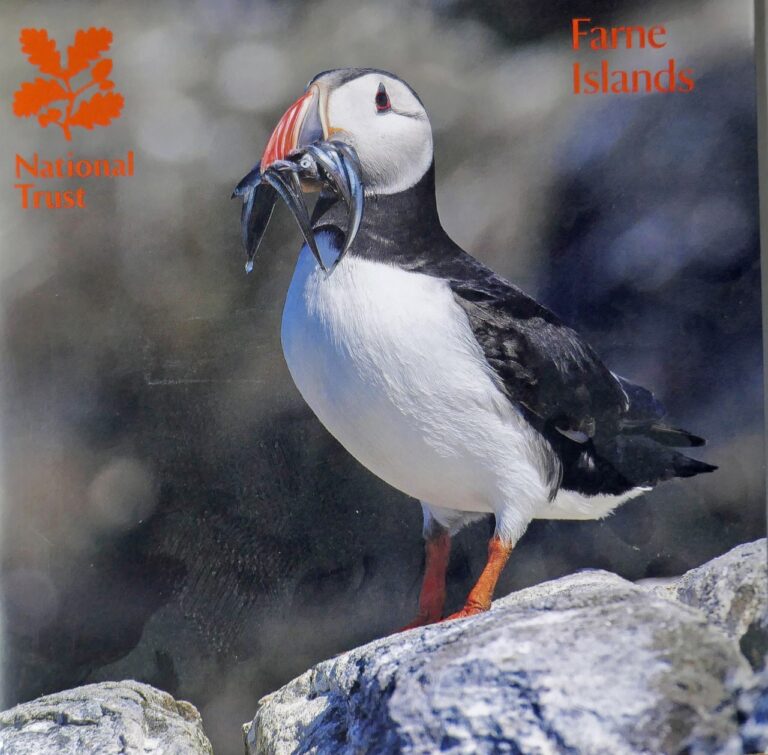Anne Wilson shares her favourite North East nature book, recommending A Souvenir Guide to the Farne Islands by John Walton.

I suppose not surprisingly to those who know me, I have chosen the new Guide to the Farne Islands written two years ago by John Walton a former property manager for 20 years.
The Farne Islands are not simply an internationally renowned seabird colony however important that may be, but have a long and fascinating history of over 1,400 years. It starts with St Cuthbert who died on Inner Farne in AD 678 and continues to 2021.
Some of the topics covered by this guide include ‘Nature on the islands’, dealing with the Auk family of breeding birds including Puffins, ‘Other Farnes’ Birds’ which looks at the other breeding species. The account of ‘Seals and Cetaceans’ considers the thriving Grey Seal colony of over 7,000 animals. Seven species of Cetaceans have been logged including on one occasion a Hump-backed Whale and Killer Wales (Orca) in the 1960s.
This guide also includes accounts of the history. Did you know there was a small monastery on Inner Farne from around 1255 until it was dissolved in 1536? The monastery grew their own crops, and sent Puffins, seals and wildfowl to their Mother House at Durham. Puffins were popular as they were classed as fish and so could be eaten on Fast days or in Lent! Seals were used to provide fish oil and wildfowl either to eat or for their eggs. The chapel on Inner Farne dates from this monastery and it too has an interesting history.
Prior Castell’s Tower on Inner Farne was originally constructed to provide better accommodation for the monks, but after the monks left it was used to accommodate a garrison to defend against any possible attacks for the Low Countries. There are also stories of pirates hiding booty on Inner Farne. This has never been found though!
The 19th century is one of the most fascinating periods on the Farnes. At times the breeding populations were decimated through persecution. It was Archdeacon Charles Thorp who paid for Watchers to protect the seabirds in the 1840s. This protection is continued by Rangers who still work to protect the islands today. One of the most popular residents in the 19th century was the donkey who took the drums of fuel to the lighthouse on Inner Farne. He loved his bottle of stout and when he could get it, chewing tobacco!
The area around The Farne Islands is one of the most dangerous parts of the North Sea, and no account can omit the most famous shipwreck of all, that of the ‘Forfarshire’ and the rescue of the survivors by Grace and her father William Darling; the lightkeeper on Longstone. Incidentally over time there have been seven different lighthouses on the islands of which six are still visible.
I do hope this very short account of the guide encourages you to read and discover more about these fascinating and important islands which we are so fortunate to have so close to us in Northumberland.
I would also recommend ‘The Farne Islands; their history and wildlife’ by Grace Watt. Though this was published in 1951 by Grace Watt (later Grace Hickling), it is still a valuable source of information regarding the Farne Islands.